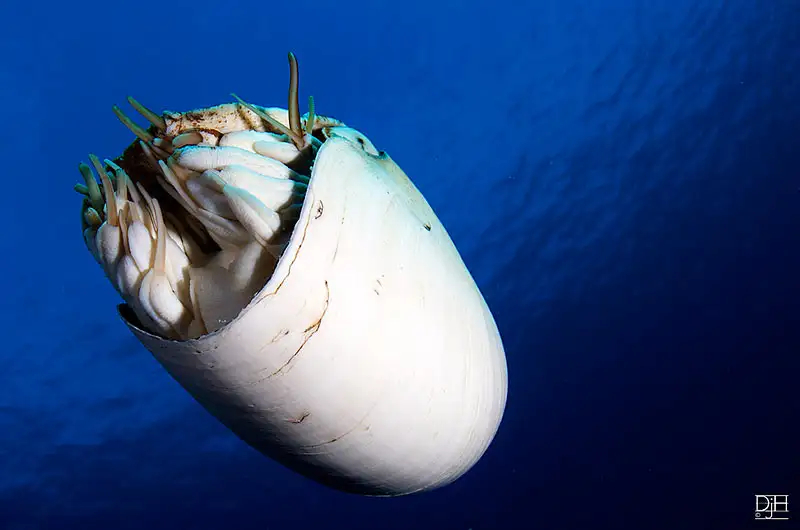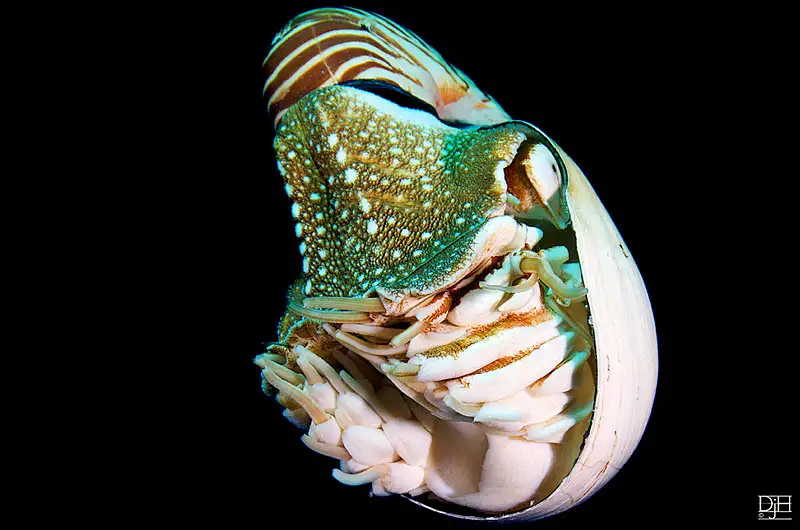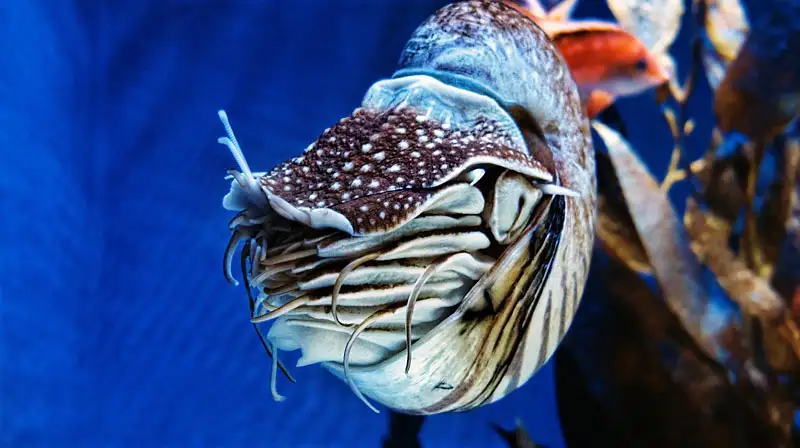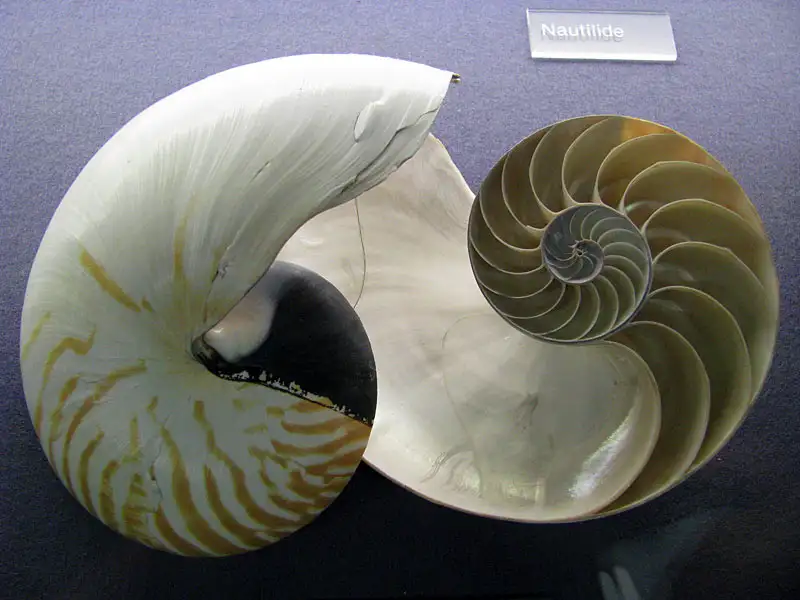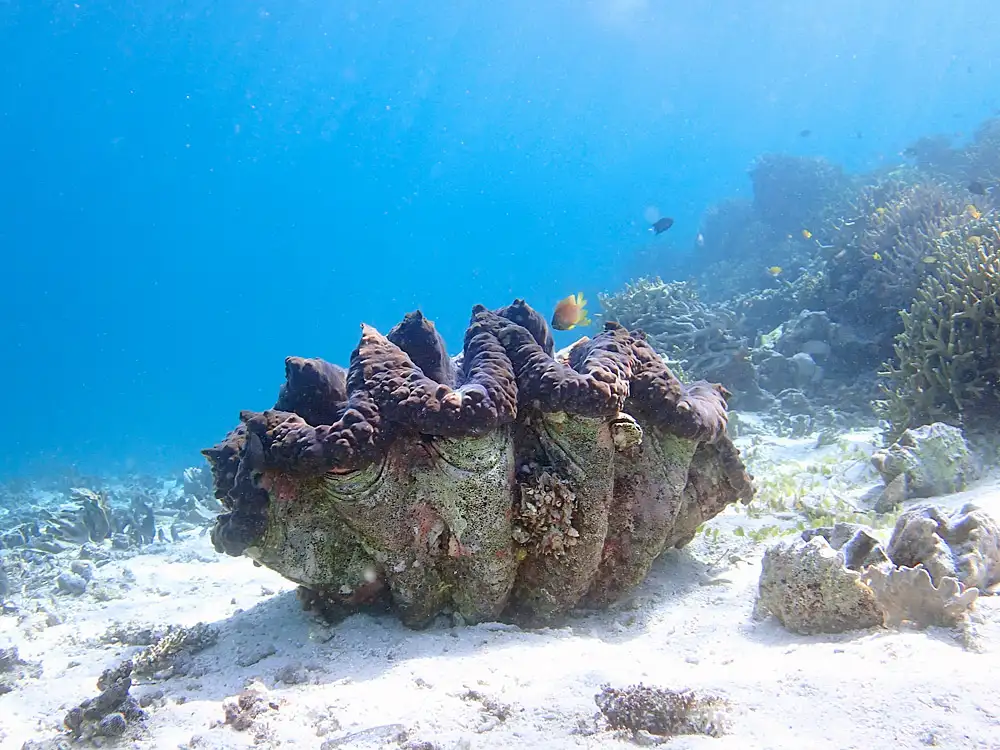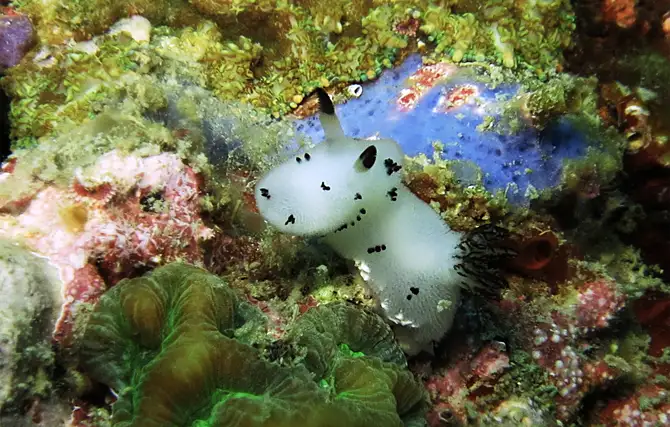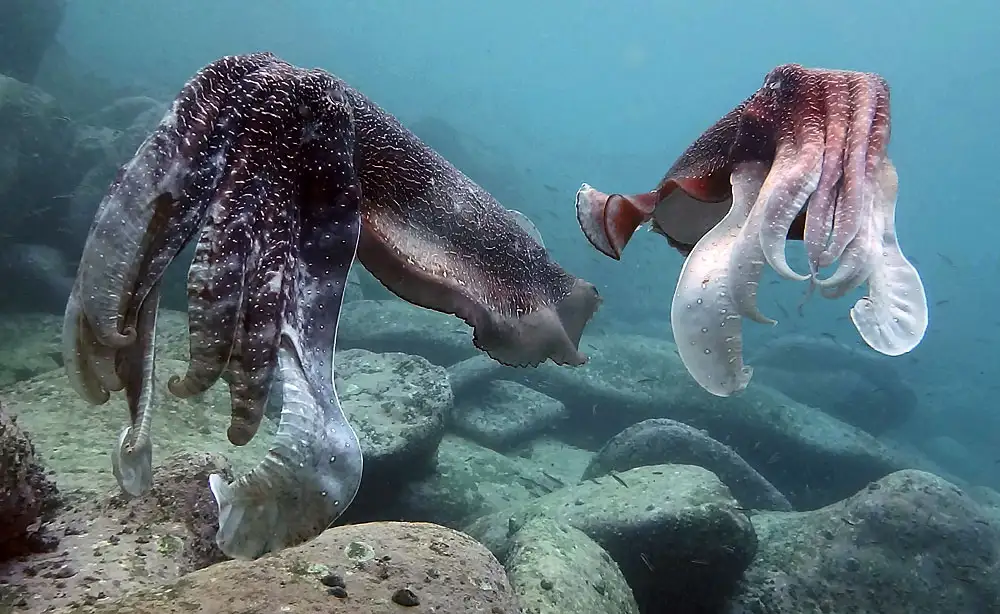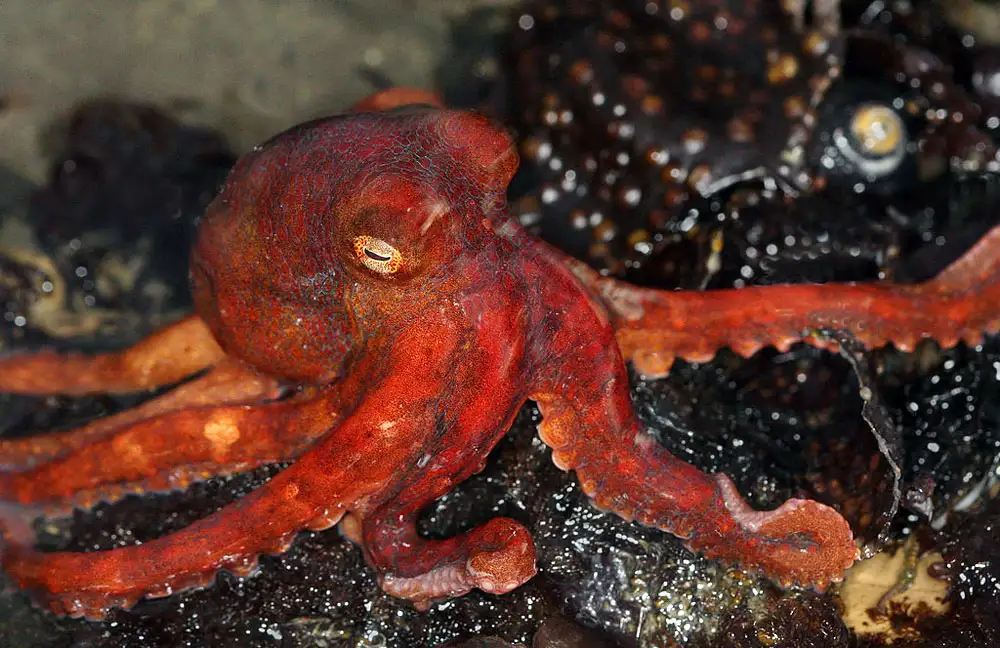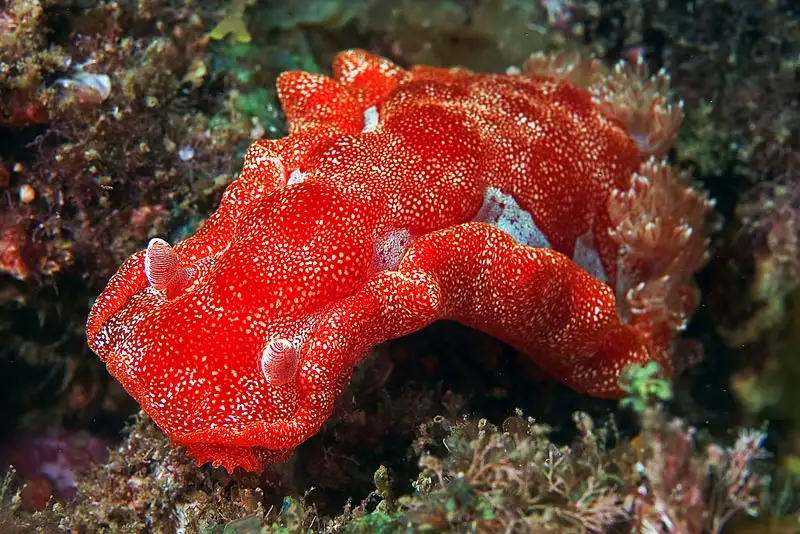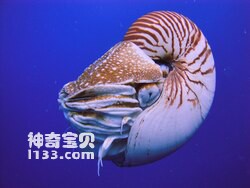Nautiloidea (Subclass · Overview)
IUCN
LCBasic Information
Scientific classification
- name:Nautiloidea (Subclass · Overview)
- Scientific Name:Nautiloidea
- Outline:Mollusca
- Family:Cephalopoda Nautiloidea
Vital signs
- length:Shell diameter 16–25 cm (species‑dependent; larger possible)
- Weight:Varies with individual and shell thickness
- lifetime:About 10–20+ years
Feature
External chambered shell with siphuncle; many sucker‑less arms; no ink sac; slow growth and late maturity.
Distribution and Habitat
Indo‑Pacific island slopes and outer reef walls; ~200–600 m by day, ascending shallower at night.
Appearance
Planispiral shell with septa and colour bands; pinhole eyes; keratinous beak; arm morphology distinct.
Details
Nautiloidea is an ancient subclass of cephalopods. Today only a handful of living species remain— notably Nautilus and Allonautilus—while most nautiloids are known from the fossil record. Modern nautiluses are famous for their external, chambered shell, the shell‑traversing siphuncle and fine control of buoyancy, earning them the nickname “living fossils”.
Ecology & Biology
Buoyancy & respiration: the siphuncle regulates gas and fluid in the chambers, enabling neutral buoyancy and diel vertical movements.
Feeding: scavenges and preys on crustaceans and small benthos; uses dozens of grooved arms and a keratinous beak.
Life history: unusually slow‑growing and late‑maturing for cephalopods; lays large, durable eggs; hatchlings emerge with a miniature shell.
Identification
Typically a planispiral shell with septa forming multiple chambers; often with radiating or wavy colour bands. Eyes are pinhole‑type; arms are numerous and lack suckers; there is no ink sac, unlike squids and octopuses.
Size & Longevity
Length: shell diameter commonly 16–25 cm, larger in some species.
Life: up to 10–20+ years, much longer than most coleoids.
Range & Habitat
Present‑day nautiluses inhabit the Indo‑Pacific, around steep island slopes and outer reef walls. By day they remain mostly at ~200–600 m; at night they may ascend to <200 mto forage.
Conservation & Threats
Threats: shell trade, by‑/trap‑catch, habitat disturbance and ocean acidification.
Management: their late maturity and low fecundity make populations vulnerable; several countries regulate capture and trade.
IUCN: this is a subclass‑level overview. Conservation status is species‑specific; we mark this entry Not Evaluated (NE).
FAQ
Q1. Why “living fossils”? Nautiluses retain ancestral cephalopod traits—an external shell and numerous sucker‑less arms—linking them to Paleozoic lineages.
Q2. How do they differ from squids/cuttlefishes/octopuses? Nautiluses have an external chambered shell and no ink sac; cuttlefishes have a cuttlebone, squids have an internal gladius, octopuses lack an internal shell.
Q3. How deep can they live? Commonly a few hundred metres; pressure limits shell integrity and buoyancy control, so they undertake diel vertical migrations.
Q4. Can they be bred in captivity? Rare and challenging—slow development and exacting requirements hinder large‑scale culture.


